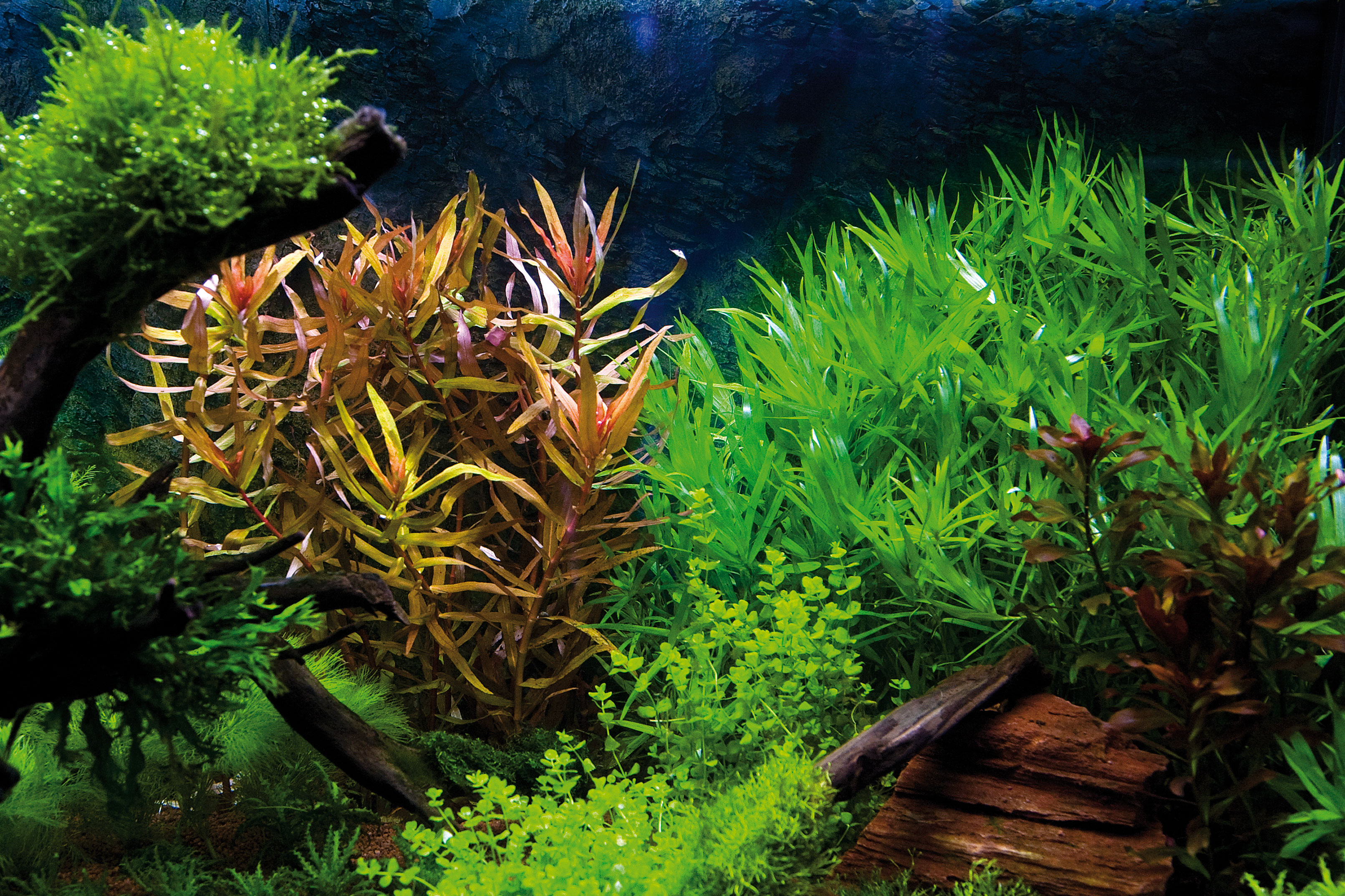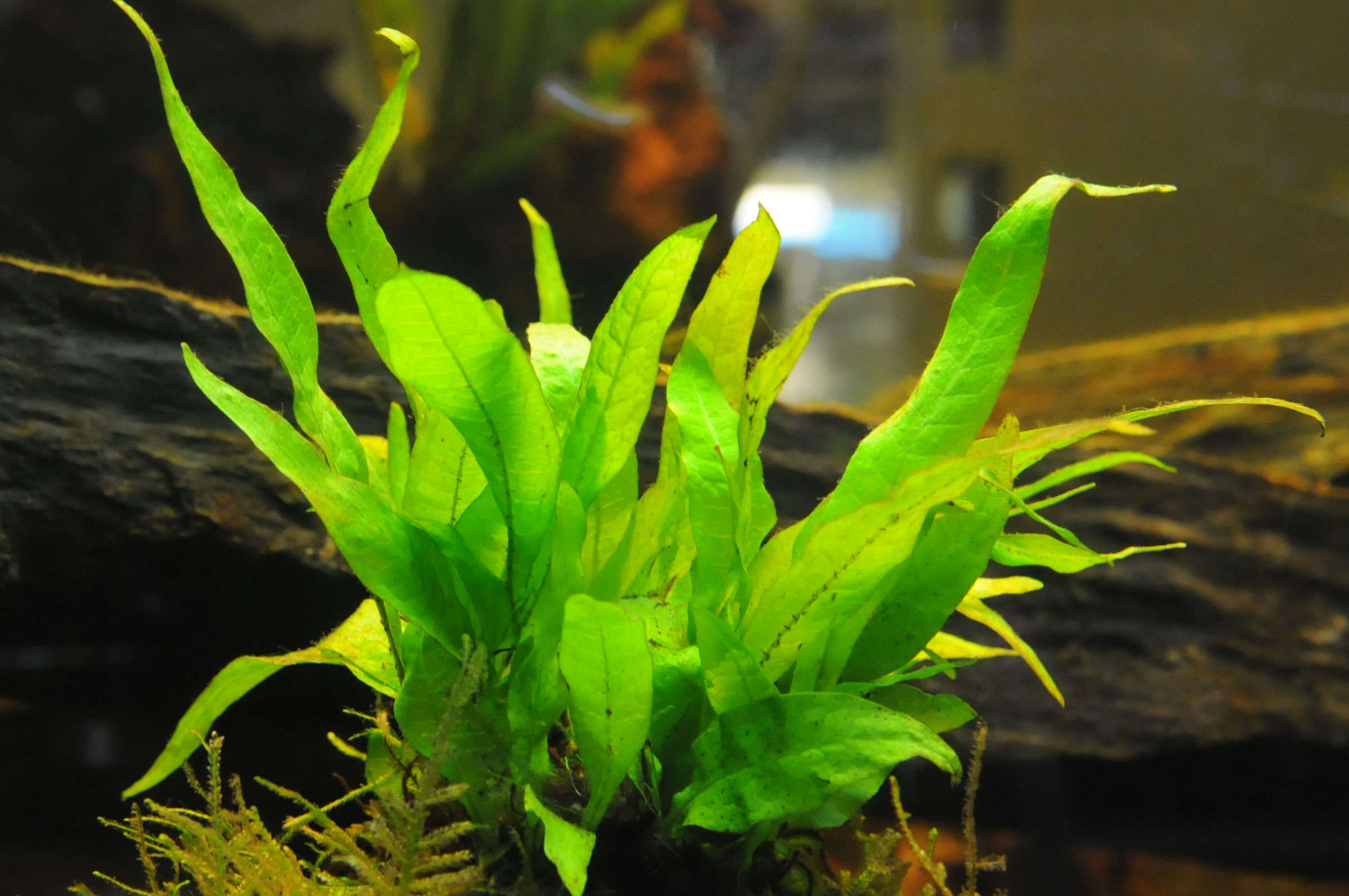Aquatic Plants Purchase and Aquarium Set Up
Buying plants is not always easy and sometimes you can get a bad deal. For this reason you need to do a bit of research.
Staff in pet shops who really know about aquatic plants are hard to find. So it is best to try a few suppliers, before you spend large sums of money on aquatic plants. Once you have found a good supplier, you should stick with it. By the same token, the cheapest offer is not automatically the best.
When you are buying, remember that only you know which plants you want and need. Don't let the salesman convince you to buy plants that you don't know.
Plants should look fresh, with few or no dead parts. You should also not buy plants that are covered in algae.
Ideally, you should buy plants where they are not stored under water. If that is not possible, choose a pet shop with a high turnover in aquatic plants, as in that case, the plants spend only a few hours or days in the sales tank.
Emers plants stored above water are usually almost algae-free. This is how almost all plants come from the aquatic plant nursery to the pet shops.


Nurseries cultivate most aquatic plants, which are overwhelmingly marsh plants and not “real” aquatic plants, above water (emers). Emers cultivated plants have to adapt when they are first put under water (submers) in the aquarium. Submers cultivated leaves often, but not always, look completely different to the emers cultivated leaves from the nursery. One more reason before buying to find out more about the plants your thinking of acquiring.
Emers cultivated leaves die off relatively quickly and new leaves grow which are suited to the underwater environment. However, this is different from plant to plant. Generally, stem plants have fewer problems adapting than rhizomateous plants. Stem plants grow almost immediately after being put in the water. Rhizomateous plants like Echinodorus need at least a few weeks or even months until they are completely adapted.
At the latest 1 - 1.5 weeks after planting in the aquarium, you should be able to see the first new shoots.
There are some real aquatic plants that cannot be kept above water e.g. Vallisneria. These are also only offered under water at the shop (no, you don't need scuba gear to buy them ![]() ).
).
More and more frequently, you can find so-called “in vitro” plants (young plants from the smallest fragment of plants on solid nutrient media) in stationary shops and via mail order. These are free from disease and algae. Usually though they are very small and sometimes don't easily adapt to aquarium conditions. With a little experience, however, they are a good alternative.
To start with, when setting up, you should ensure that you plant a lot of quick growing stem plants. They should make up about 80% of the total plant content. Moreover, the aquarium should be about 70 - 80% planted (i.e. from above you can only see 20 - 30% of the bottom!).
Upward and fast plant growth is the best and most natural way of ensuring algae don't come to the top. Nevertheless, in the initial period after setting up the aquarium, an algae infestation may develop. This is not unusual and happens quite frequently. You can sit through this initial algae plague.
Please don't lose patience immediately and resort to often touted anti-algae products. All anti-algae products are toxic and therefore have side effects of one kind or another. They are not only toxic for algae but also for the plants you are trying to protect as well as for the fish, molluscs and crustaceans (snails, shrimp). Even worse, by damaging the plants they set up a vicious cycle. After the treatment, the plants don't grow again immediately (if at all) which leads to the next algae infestation and we are back at the beginning again.
It's not for nothing that anti-algae products are top sellers in the aquarium business!
The following stem plants are robust and grow quickly
- Heteranthera zosterifolia
- Hygrophila angustifolia
- Hygrophila corymbosa
- Hygrophila difformis
- Hygrophila polysperma
- Limnophila sessiliflora
- Limnophila heterophila
- Rotala rotundifolia
- Cabomba caroliniana
- Ludwigia repens
- Ludwigia palustris
- Ceratophyllum demersum (Chickweed)
- Shinnersia rivularis (Mexican Oak Leaf)
(this and the following lists do not claim to be complete)
Stem plants can be relatively easily transferred. You can easily pull them out, cut them back (as a rule not more than twice) and replant the cutting.
As for other plants, which are not as easy to transfer as stem plants because they put down extensive roots so it is better to leave them in the same place, but which are nevertheless robust and fast growing and therefore recommended at the set up:
- Echinodorus tenellus, there is a small (5 cm) and a long , red coloured variety with very small leaves (to 18 cm)
- Echinodorus quadricostatus (to 10 cm high)
- Echinodorus bolivianus (very similar to E. quadricostatus)
Be careful with the big Echinodorus (E. osiris, E. bleheri etc.)! In good running aquariums they reach or exceed the dimensions given in the literature. One of these plants can completely monopolise a 60 l or even a 100 l aquarium.
Not so fast growing but robust and recommended at the beginning in smaller numbers
- Microsorum pteropus (Java fern)
- Vallisneria spiralis
- Vallisneria americana
The following plants are not recommended when setting up as they are either too demanding and/or don't grow fast enough
- All Cryptocorynes (demanding and slow growing)
- All Anubias (slow growing)
- All Althernanteras (demanding and slow growing)
- Didiplis diandra (demanding and slow growing)
- Lobelia cardinalis (slow growing)
- Rotala macranda (demanding and slow growing)
- Limnophila aquatica
- …
There is nothing wrong with buying a pot of one or the other of these plants to add some variety to the aquarium or to experiment a little. It could always be the case that one or another of these varieties grows well for you from the beginning. However, they cannot be used as a remedy against algae.
Later, when everything is running smoothly (about half a year), you can change some of the stem plants or plant areas in the aquarium to slower growing or more sensitive plants.
With few exceptions, plants with rhizomes rather than stems do not react well to being moved. You should therefore think carefully about where you want to place these plants in the aquarium.
A few more tips
- You don't need to “pick” stem plants out of the pot, cutting and replanting is fine.
- Be careful not to squash the stem.
- Ansonsten muß die Steinwolle von den Wurzeln so weit wie möglich entfernt werden, da sie die Kiemen und Därme der Fische schädigen kann. Das Rhizom sollte dabei aber möglichst nicht verletzt werden.
- You should try to get as much as possible of the mineral wool off the roots, as this can be harmful to the gills and intestines of the fish. Try not to damage the rhizome when you are doing this.
- It's better to leave the last bit of mineral wool on than damage the plant. The health of the plant is more important here.
- The mineral often contains a lot of fertilizer. The pots are rinsed with a fertilized solution in the nursery. Rinse them well with luke warm water.
- The roots should be cut to a length of 2 - 3 cm with sharp scissors or a knife before planting. These only serve as a first hold and rot away quite quickly. The plant quickly grows new roots.
- Remove squishy brown roots and leaves before planting.
- If the roots are excessively brown and squishy, you should take the plants back to the shop and ask for a replacement. You cannot see the condition of the plants in the pot before buying.
- Stem plants should not be cut back too often. Some species don't tolerate cutting back very well, whereas others grow into a beautiful bush. You will learn from your own experience here.
- The plant should be replanted at the latest when the part of the plant remaining in the gravel becomes unsightly. To do this cut off the top part (at least 10 cm long or 3 - 4 leaf shoots) and replant it. Pull out the old part slowly without disturbing the gravel too much, and maybe shake it a little.
- Please keep all stems separate and do not bundle them together even with lead tape or rubber. You have to check the stems are spaced out enough depending on the species. Many species don't like it when they are too shaded and they start to lose leaves quickly.
- Most stem plants are sociable! They grow best when they are planted in groups of at least 4 - 6. Individual stems almost always grow in a stunted manner!
- If you want a stem plant to spread faster, cut a long stem into a number of parts.
A little experimenting here brings experience. - A lot of stem plants which are left to grow along the water surface ("float"), branch well and become particularly strong (e.g. Rotala, Limnophila, Cabomba, Ludwigia). You shouldn't let them grow too thick on the surface though, as they block light from the other plants and themselves. Moreover, some species tend to take on the emersed growth form when floating (adapting to falling water levels in nature). Then you have to re-adapt them to underwater growth.
- Aquatic plants are want to be fertilized, best with CO2 too.
- Changing the water regularly and adequately removes excessive nutrients, fertilization replaces the depleted nutrients. The more often you change the water, the closer you are to optimum fertilization. This supports the growth of the higher aquatic plants and pushes back the algae.
We recommend weekly at least 20 - 30 %.
The original version of this text was written by Markus Löhner, written in DRTA

